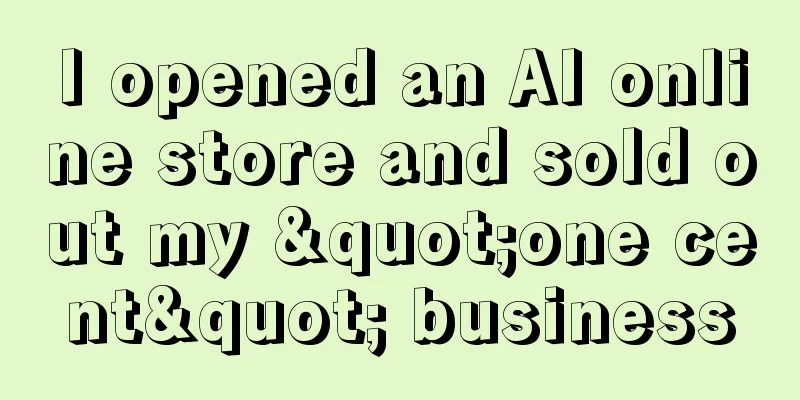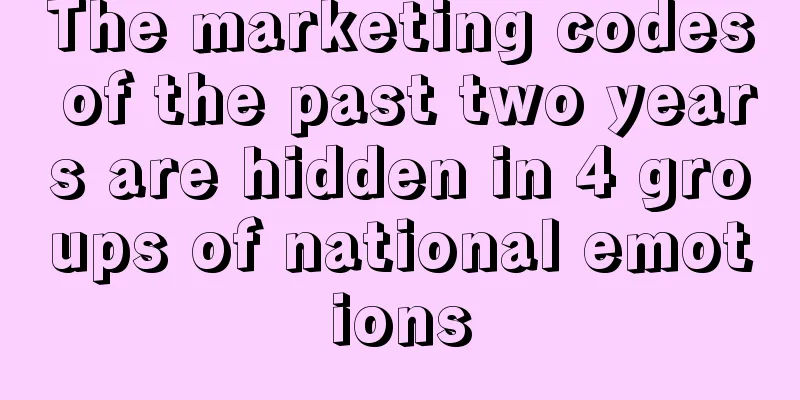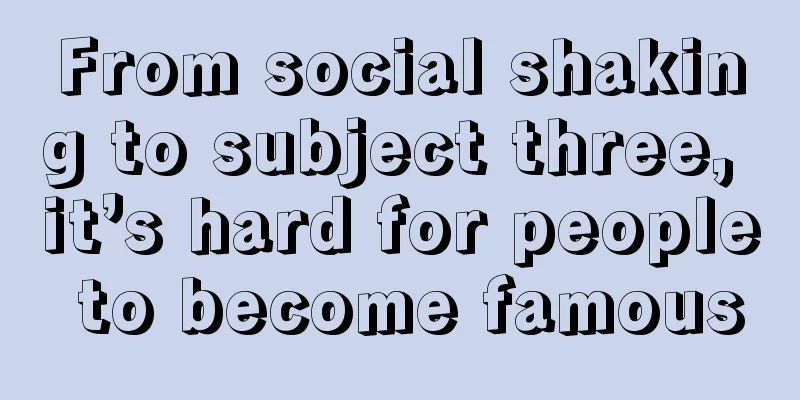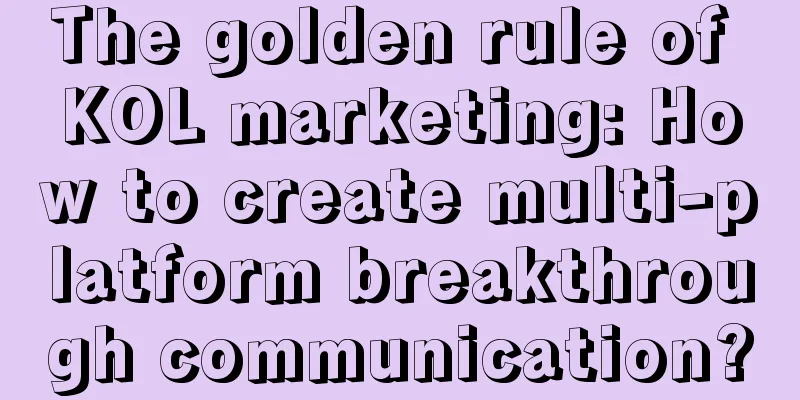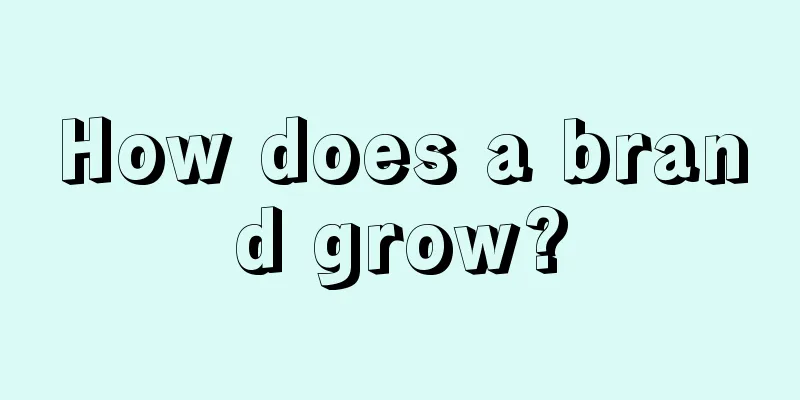Shout the right slogan and become the first choice (9-word slogan tips)

Don't be greedy, don't retreat, don't be proud. 1. Starting Style: Shouting SlogansMarketing is not only about who will buy, but also about who will say and what to say. Therefore, the slogan is the first, and the first step is to find that sentence:
Marketing is not an art. Marketing must first solve the problems of selling, shipping and distributing goods. Therefore, slogans come first, and visuals come second, or it is best to combine the two and make them complement each other. Therefore, the visuals of pictures must first be able to be conveyed in words, rather than just being understood but not expressed in words. Such visuals become art and showmanship. If the slogan is weak, you must first think about the language and organize the language well - that is, to answer: what are you, how are you different, and why do you think so. This is the key to the problem. These three questions are like Drucker's classic three questions: what is your business, what will your business be, and what should your business be. Drucker's three questions are three questions within the enterprise, while the core of the language nail is three questions outside the enterprise, especially the three questions facing consumers. What are you (category), what are the differences (characteristics), and how do you know (credibility).
In addition, it is a good thing for a brand to have a product with a nickname, which will give the product many opportunities for free publicity, such as the "deadly big Wusu" for Wusu and the "little black book" for ThinkPad. A product with a nickname will become a tacit understanding. For example, in Li Zongsheng’s song “Recently I’m a Bit Annoyed”, there is a line of lyrics:
Isn't it true that Viagra occupies the blue color, so other brands can't use it? Of course, they can use it. But every time you promote it, it will only deepen the potential consumers' memory of the leader. So, different is better than better. In fact, you can't defeat the boss by using the same method as the boss. On how to become the second child, let’s take a look at a case study: Cialis Cialis played it very clearly. First of all, Cialis chose a different visual hammer, two separate bathtubs. Sometimes, indirect and implicit means have more extension and imagination than explicit ones. Another example: Yili Shen Lao Zhao has a smirk on his face. Anyone who uses it knows that it is much better than Shenbao. The bathtub of Cialis indirectly and implicitly conveys that the two are chatting naked, and the function of Cialis is to treat erectile dysfunction. Language comes first, vision comes second. The language of Cialis is simple, direct and rough - the drug is effective for 36 hours - which amplifies the function. This sentence also effectively distinguishes Cialis from Viagra. With the language nail (36 hours of drug effect) and the visual hammer (bathtub), Cialis gradually surpassed Levitra from a latecomer and became the second brand in this category. This is a remarkable thing. 2. Essence: Signifier and Signified1. Signifier, signifiedDeep understanding, slogans and vision, are essentially signifier and signified: the signifier must be perceptible, and the signified can be recognized and understood. Saussure believed that any linguistic symbol is composed of "signifier" and "signified". [Signifier must be perceptible, and the signified can be recognized and understood], [signified must be translatable, and the signified can be expressed and explained in language] - and metaphor is the "simultaneous interpretation" of signifier and signified. Words are the language of a brand, and vision is the symbol of a brand. Why are symbols and language important? Because the final touchpoints for customers are symbols and language, which are the nuclear weapons to mobilize customer cognition. Symbols and language are the spells (symbols + spells) that brands use to mobilize consumer cognition. Building a brand is to sort out and clarify the visual (symbols) and language (spells) system that belongs to the brand. Why do we need metaphors? Because some things can only be understood but not expressed in words. Also, due to the actual media, laws, and language standards, we can only use metaphors and cannot speak out. For example: Yili Shen, anyone who uses it will know; Shenbao, if he is good, I am also good, this is a metaphor. Although it is a metaphor, the effect achieved must directly hit the needs behind the metaphor. Durex is probably the best at using metaphors. In today’s world, metaphors are just memes. Using memes is not the goal, but conveying brand characteristics and meeting needs directly. Durex used metaphors on Weibo to the highest level, and Okamoto 001 sold out. The means are not the goal, but selling products . It is not enough to have metaphors in language and text, they must be combined with visual metaphors. The power of visual images is 100 times stronger than that of words - voice nails + visual hammers; betel nuts + cigarettes, only then can the power be boundless. To this end, language should guide visual presentation, and visual presentation should bless language concreteness. A symbol is not just a logo, but it should serve as a visual hammer. The visual presentation should be developed, created and delivered around the brand positioning and product features in order to convey the perceptual effect of infinite power. 2. So what is a symbol?Symbol: a perception that is considered to carry meaning. When applied to brands, this meaning is the cognitive advantage of consumers built around brand positioning. Only when it is recognized by consumers can it become a symbol of meaning at the brand level, and then form the meaning of the symbol, such as Nike's check mark, Adidas' three stripes, and Moutai's Mao-shaped bottle. Why do we need symbols or symbolization? Because communication includes two basic links: sending and receiving. Both links must be completed with symbols, and the symbols sent must be received and understood. The general term we use for words, sounds, or images that carry meaning is symbol - Hall. To do this, the sender needs symbols with meaning and the meaning of the symbols, and the receiver also needs to be able to understand the sender's original meaning. That is: the sender establishes the meaning of symbols and symbols of meaning around the brand and product characteristics, and transmits them to the recipient through materials and media. The recipient interprets and understands the meaning of the symbols based on his or her own cognition. Therefore, symbols are carriers of meaning. The meaning (intention) of the sender is expressed in a symbolic way. The purpose of symbols is to express and convey their meaning (intention). In other words: there is no symbol that does not express meaning. Any symbol must convey meaning. In the context of marketing and branding, the producers of symbols are enterprises, and the objects of symbol communication are consumers; how can the givers of symbol meaning make the receiver understand the meaning to be conveyed, and the object of this meaning (intention) is not an individual, but a group (target consumers), and the process of understanding must ensure that the meaning (intention) conveyed is not misinterpreted as much as possible and can be effectively obtained. The only way is to establish external thinking: to discover consumers' category memory from the receiver and collective subconsciousness. It is to use human collective cognition and collective subconsciousness to produce symbols to improve brand transmission efficiency and reduce communication costs. The best way to enter the mind is to find the existing cognition in the mind. Starting from the human subconscious mind and thinking from the perspective of the receiver, symbols can mobilize the power of the mind and then establish cognitive advantages. If we want to build a brand, we must establish a symbol with the strongest cognition that can drive consumers' cognition and actions. For example: stop at a red light and go at a green light, for example: red can of Wang Laoji
3. The existence of the brand, looking for the meaning of existence:For a brand to exist, it must find the meaning of its existence, and symbols are the carriers of meaning that can be perceived and trigger actions. Therefore, symbols are the carriers of brand meaning. Is Nike still Nike without the check mark? Is ThinkPad still ThinkPad without the red dot? Is Volvo with a Geely logo still Volvo? - Whitehead: Humans seek symbols to express themselves - meaning is symbols. When symbols break, meaning also breaks.
Discover the Force, present the subconscious of categories, renovate symbols, and realize brand parasitism - find symbols with obvious referential attributes, carrying human collective cognition, collective contracts, and conventions (conventions: the name of a thing or social habits, which are recognized after long-term social practice and are followed and used by everyone) - discover symbols, amplify symbols, become symbols, and stimulate the Force. 3. Nine categories1. The key is to
2. Noun, verb
3. Taste
4. Emotion
5. Craftsmanship
6. Competitiveness
7. Use existing spoken language and dialects
8. Dramatize performance
Author: Houshan Guest House Source: WeChat public account "Lao Gao Business and Brand" |
<<: The "counterattack" of cats and dogs, can these cute pets that have gone viral make money?
>>: Starbucks is once again making a fool of itself in takeaway coffee
Recommend
Amazon holds Prime members' early access day to save sluggish sales
In order to boost sales, Amazon has a new way. Thi...
How to join the cross-border e-commerce shein? What are the requirements for joining?
As a well-known cross-border e-commerce platform, ...
Blind box live streaming: Why do young people pay for it?
Blind box live broadcasts have emerged on platform...
"Both quality and quantity are needed" - How should lean growth in the social track be achieved?
Once upon a time, social networking was an extreme...
Analysis of Xiaohongshu beauty users’ insights
We know that the beauty industry is one of the mos...
Is Dunhuang platform a scam platform? Is anyone doing cross-border e-commerce in Dunhuang?
Dunhuang Platform is a popular cross-border e-comm...
Shopee Philippines to freeze accounts that repeatedly list banned products
Shopee Philippines announced that starting from Oc...
How to apply for VAT on Amazon Europe? How much VAT should be paid?
To open a European store on Amazon, you need to re...
Several misunderstandings and solutions for Xiaohongshu advertising
Xiaohongshu has become a new frontier for new cons...
If we continue to do this, there will be fewer and fewer people starting businesses!
This article deeply analyzes the challenges and di...
How to decorate a shop using Shopify? Decoration tutorial introduction
Shopify is a one-stop business platform. Merchants...
What does Amazon KYC audit mean? What are the audit requirements?
Merchants who open stores on Amazon sometimes enco...
Are items purchased from Amazon covered by domestic warranty?
Amazon has a wide variety of products and competit...
Why is Amazon's sales unstable? How to increase sales?
Whether you are an experienced e-commerce seller o...
Mid-year review | Xiaohongshu's latest developments and trends
What are the latest developments and trends of Xia...
